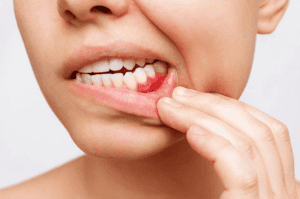Maintaining good oral hygiene is essential for overall dental health, and flossing plays a crucial role in preventing gum disease and tooth decay. For individuals with sensitive gums, using the right dental floss is particularly important to avoid irritation and discomfort. Waxed dental floss, specifically designed to glide smoothly between teeth, offers several benefits for individuals with sensitive gums. In this article, we will explore the various advantages of using waxed dental floss, how it helps address the needs of sensitive gums, and why it is a preferred choice for many individuals. Understanding these benefits will empower you to make informed decisions about your oral care routine and promote better gum health.
What is Sensitive Gums?
Sensitive gums, also known as gum sensitivity or gingival sensitivity, refer to a condition where the gum tissue becomes easily irritated or inflamed. It is
Gum inflammation: When plaque accumulates on the surface of the teeth and progresses below the gumline, it can cause gum inflammation. This condition, known as gingivitis, can lead to red, swollen, and easily bleeding gums.
Aggressive brushing: Brushing too hard or using improper brushing techniques can irritate the gum tissue and contribute to gum sensitivity.
Gum recession: Gum recession refers to the gradual downward movement of the gum tissue, exposing the tooth roots. This can make the roots more sensitive to stimuli and cause discomfort.
Gum disease: If gingivitis is left untreated, it can progress into periodontal disease, a more severe form of gum disease. This can further contribute to gum sensitivity and lead to gum recession and tooth loss.
Tooth sensitivity: Sometimes, gum sensitivity can be related to tooth sensitivity, where the underlying tooth structure becomes more sensitive to hot, cold, sweet, or acidic foods and beverages.
What is Waxed Dental Floss?
Waxed dental floss is a type of dental floss that has a thin coating of wax applied to its surface. The wax coating makes the floss smoother and easier to slide between teeth, particularly in tight spaces where the teeth are closely packed together. It is designed to facilitate the process of flossing by reducing friction and allowing the floss to glide more smoothly along the tooth surfaces and gumline.
The wax coating on dental floss serves a few purposes. Firstly, it helps the floss navigate around the curves and contours of the teeth more easily, making it less likely to shred or break during use. This can be especially beneficial for individuals with tightly spaced teeth or teeth that are closely aligned.
Secondly, the wax coating provides a slight lubrication that enables the floss to slide between the teeth more comfortably. This can be particularly useful for individuals with sensitive gums or those who experience discomfort or bleeding while flossing.
Waxed dental floss is available in various thicknesses and flavors to cater to different preferences. It is typically made from nylon or PTFE (polytetrafluoroethylene) material, both of which are strong and durable for effective plaque removal.
It is important to note that while waxed dental floss can make flossing more comfortable and convenient, the choice between waxed and unwaxed floss ultimately comes down to personal preference. Some individuals may prefer the natural feel of unwaxed floss or may opt for it if they have wider spaces between their teeth.
Benefits of Waxed Dental Floss for Sensitive Gums
Enhanced Comfort: The waxed coating on dental floss makes it significantly more comfortable to use, particularly for individuals with sensitive gums. The smooth glide of waxed dental floss reduces friction and minimizes the chances of gum irritation and discomfort during flossing.
Gentle on Gum Tissues: Waxed dental floss is designed to be gentle on gum tissues, making it an excellent choice for individuals with sensitive gums. It reduces the risk of causing inflammation or aggravating existing gum sensitivity, allowing for effective cleaning without discomfort.
Effective Plaque Removal: The primary purpose of flossing is to remove plaque and food particles from between teeth and along the gumline. Waxed dental floss effectively removes plaque buildup, helping to prevent gum disease and tooth decay. Its smooth texture allows for thorough cleaning without causing damage to sensitive gum tissues.
Easy Maneuverability: The waxed coating on dental floss improves its maneuverability, enabling it to navigate tight spaces and reach areas that are difficult to clean with other flossing methods. This ease of use is particularly beneficial for individuals with sensitive gums, as it minimizes the need for excessive force or repetitive movements.
Reduced Bleeding: Sensitive gums are more prone to bleeding during brushing or flossing. Waxed dental floss reduces the risk of bleeding by minimizing friction and irritation on the gum tissues. Regular use of waxed floss can help alleviate gum sensitivity and reduce bleeding over time.
Tips for Using Waxed Dental Floss Effectively
Using waxed dental floss effectively is essential for optimal oral hygiene and gum health. Here are some tips to help you use waxed dental floss effectively:
Use the right length: Cut a piece of waxed dental floss that is approximately 18 to 24 inches long. This length allows you to have enough floss to work with and helps ensure you’re using a clean section of floss between each tooth.
Hold the floss correctly: Wrap the ends of the floss around your middle fingers, leaving about 1-2 inches of floss between them. Use your thumbs and index fingers to guide the floss between your teeth.
Slide gently between teeth: Guide the floss between your teeth using a gentle back-and-forth motion. Avoid snapping or forcing the floss, as this can cause gum irritation.
Curve the floss: Form a C-shape with the floss around each tooth, making sure to go below the gumline. This helps remove plaque and debris from the tooth surfaces and along the gumline.
Be thorough: Move the floss up and down against each tooth, ensuring you clean both sides of the tooth and the space between them. Take your time to clean each tooth properly.
Use a new section of floss: As you move from one tooth to the next, unroll a fresh section of floss to avoid transferring bacteria or debris from one tooth to another.
Be gentle with sensitive gums: If you have sensitive gums, apply gentle pressure when flossing to avoid causing discomfort or irritation. If you experience bleeding or significant discomfort, consult with a dental professional.
Floss all teeth: Remember to floss all your teeth, including the back teeth, where plaque and food particles can easily accumulate.
Incorporate flossing into your routine: Make flossing a daily habit, ideally after brushing your teeth. Consistency is key to maintaining good oral health.
In conclusion, using waxed dental floss can be highly beneficial for individuals with sensitive teeth and gums. The wax coating on the floss provides a smoother and gentler experience, reducing the risk of irritation and discomfort during flossing. By incorporating waxed floss into their oral hygiene routine, individuals with sensitive teeth can effectively remove plaque and debris from between their teeth and along the gumline, promoting better oral health.
It is important to remember that flossing, whether with waxed or unwaxed floss, should be performed with care and attention to avoid causing further sensitivity or damage to the gums. If you have persistent tooth sensitivity or experience any oral discomfort, it is advisable to consult with a dental professional for a thorough evaluation and personalized advice. By prioritizing oral hygiene practices that cater to sensitive teeth, such as using waxed dental floss, individuals can take proactive steps towards maintaining optimal oral health and enjoying a pain-free and comfortable smile.

